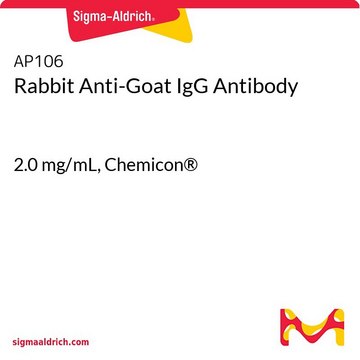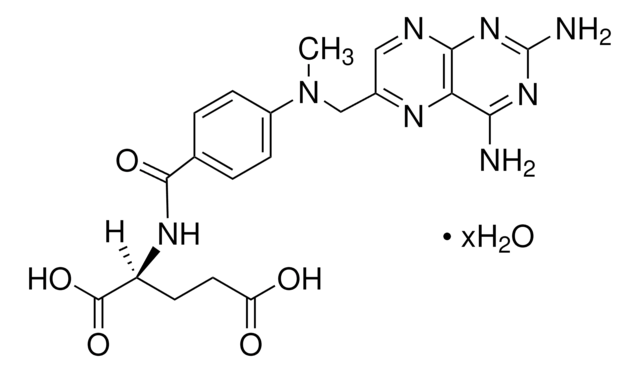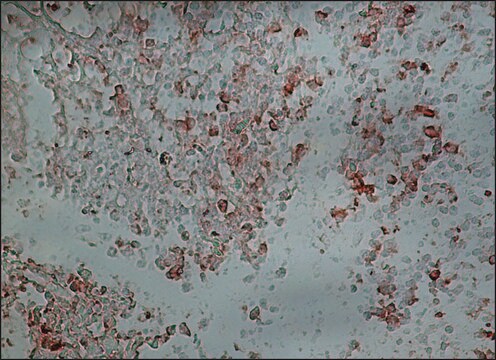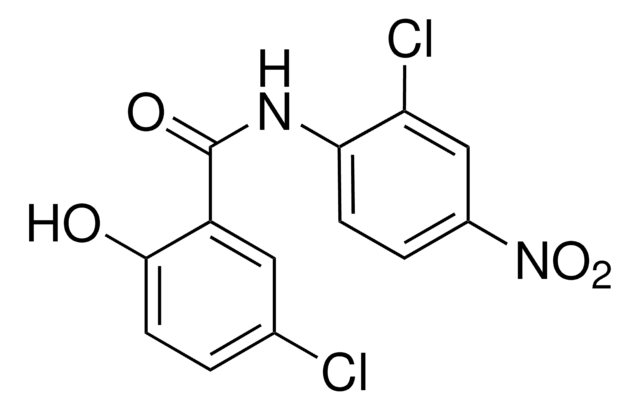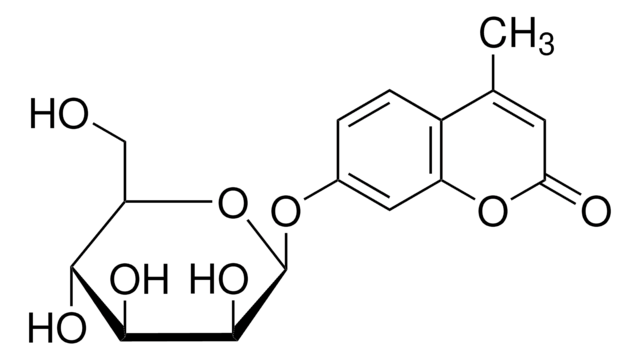H2414
Anti-Humanin (HN) antibody produced in rabbit
affinity isolated antibody, buffered aqueous solution
Sinônimo(s):
Humanin Detection Antibody, Rabbit Anti-Humanin
Faça loginpara ver os preços organizacionais e de contrato
About This Item
Produtos recomendados
fonte biológica
rabbit
Nível de qualidade
conjugado
unconjugated
forma do anticorpo
affinity isolated antibody
tipo de produto de anticorpo
primary antibodies
clone
polyclonal
Formulário
buffered aqueous solution
reatividade de espécies
human
técnica(s)
western blot: 1:500
Condições de expedição
dry ice
temperatura de armazenamento
−20°C
modificação pós-traducional do alvo
unmodified
Informações sobre genes
human ... MT-RNR2(4550)
Descrição geral
Humanin (HN) is a small polypeptide, derived from mitochondria. This protein is secreted by various cells and is localized in the plasma and bound to the cell membranes.
Imunogênio
peptide corresponding to the humanin protein (amino acids 9-24).
Aplicação
Anti-Humanin (HN) antibody produced in rabbit has been used in:
- immunohistochemistry
- immunoprecipitation (1:300)
- fluorescent immunohistochemistry (1:300)
- immunoblotting (1:500)
Ações bioquímicas/fisiológicas
Humanin (HN) acts as a neuroprotective factor. It is involved in promoting cell survival. Humanin suppresses cell death in the neuronal cells caused by Alzheimer′s disease-related insults like anti-amyloid- precursor protein antibody, neurotoxic amyloid β (Aβ) peptides, and familial Alzheimer disease proteins.
forma física
Solution of 1 mg/mL in phosphate buffered saline containing 0.02% sodium azide.
Exoneração de responsabilidade
Unless otherwise stated in our catalog or other company documentation accompanying the product(s), our products are intended for research use only and are not to be used for any other purpose, which includes but is not limited to, unauthorized commercial uses, in vitro diagnostic uses, ex vivo or in vivo therapeutic uses or any type of consumption or application to humans or animals.
Não está encontrando o produto certo?
Experimente o nosso Ferramenta de seleção de produtos.
Código de classe de armazenamento
10 - Combustible liquids
Classe de risco de água (WGK)
nwg
Ponto de fulgor (°F)
Not applicable
Ponto de fulgor (°C)
Not applicable
Escolha uma das versões mais recentes:
Já possui este produto?
Encontre a documentação dos produtos que você adquiriu recentemente na biblioteca de documentos.
Mariela A Moreno Ayala et al.
Scientific reports, 10(1), 8542-8542 (2020-05-24)
Humanin (HN) is a mitochondrial-derived peptide with cytoprotective effect in many tissues. Administration of HN analogs has been proposed as therapeutic approach for degenerative diseases. Although HN has been shown to protect normal tissues from chemotherapy, its role in tumor
Radhika H Muzumdar et al.
PloS one, 4(7), e6334-e6334 (2009-07-23)
Decline in insulin action is a metabolic feature of aging and is involved in the development of age-related diseases including Type 2 Diabetes Mellitus (T2DM) and Alzheimer's disease (AD). A novel mitochondria-associated peptide, Humanin (HN), has a neuroprotective role against
Jon-Philippe K Hyatt
Physiological reports, 10(13), e15377-e15377 (2022-07-10)
Skeletal muscle adapts to aerobic exercise training, in part, through fast-to-slow phenotypic shifts and an expansion of mitochondrial networks. Recent research suggests that the local and systemic benefits of exercise training also may be modulated by the mitochondrial-derived peptide, MOTS-c.
Changhan Lee et al.
Trends in endocrinology and metabolism: TEM, 24(5), 222-228 (2013-02-14)
Mitochondria have been largely considered as 'end-function' organelles, servicing the cell by producing energy and regulating cell death in response to complex signals. Being cellular entities with vital roles, mitochondria communicate back to the cell and actively engage in determining
Carla Janzen et al.
PloS one, 13(3), e0193583-e0193583 (2018-03-29)
Intrauterine growth restriction (IUGR) results from a lack of nutrients transferred to the developing fetus, particularly oxygen and glucose. Increased expression of the cytoprotective mitochondrial peptide, humanin (HN), and the glucose transporter 8, GLUT8, has been reported under conditions of
Nossa equipe de cientistas tem experiência em todas as áreas de pesquisa, incluindo Life Sciences, ciência de materiais, síntese química, cromatografia, química analítica e muitas outras.
Entre em contato com a assistência técnica
